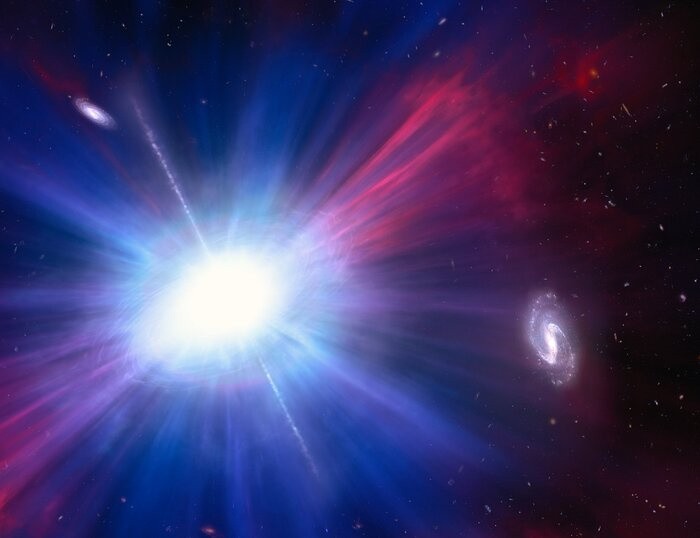In an unexpected turn of events, NASA's Hubble Space Telescope has captured a peculiar burst of extraordinarily intense light in an unexpected place, far away from any host galaxy. The phenomenon is known as a Luminous Fast Blue Optical Transient (LFBOT).
This rare celestial event has added a layer of complexity to our understanding of these phenomena.

The Rare Celestial Event 'LFBOT'
LFBOTs, characterized by their sudden and brilliant flashes of visible light, are among the brightest events in the cosmos. They have been a subject of interest since their first discovery in 2018, according to the European Space Agency (ESA).
The recent LFBOT, designated AT2023fhn and named "the Finch," was closely observed by various telescopes spanning the electromagnetic spectrum, each providing unique insights.
However, the Hubble Telescope's exceptional precision pinpointed the event's location. The Finch exhibited classic LFBOT characteristics, emitting an intense blue light and undergoing rapid evolution, in stark contrast to the gradual dimming observed in supernovae.
Strikingly, the Finch was found in a seemingly isolated space between two neighboring galaxies in a location previously unassociated with these celestial events, which were believed to be confined within host galaxies.
This revelation challenges existing theories about the environments in which LFBOTs occur. Ashley Chrimes, the lead author of the Hubble paper, emphasized the pivotal role played by Hubble's observations in recognizing the anomaly. He noted that without the Hubble data, the unusual nature of the Finch might have gone unnoticed.
While LFBOTs have been thought to be a rare type of supernova, the short lifespan of the massive stars that give rise to supernovae raises questions about how these progenitor stars could travel such considerable distances from their birthplace, typically a cluster of young stars.
Read Also : NASA Hubble Discovers Saturn's Ring System Heats Planet's Atmosphere-A Never-Before-Seen Phenomenon!
Found Within Spiral Arms
ESA noted that previously, all LFBOTs were found within the spiral arms of galaxies, where star formation is actively occurring. The Finch first came to attention through the Zwicky Transient Facility, a ground-based camera surveying the entire northern sky.
Following its detection, a pre-planned observation program was set into motion, rapidly redirecting telescopes to study the potential LFBOT candidate.
Spectroscopic measurements taken with the Gemini South telescope in Chile revealed the Finch's scorching temperature of 20,000 degrees Celsius. Additional data from observatories like Chandra X-ray Observatory and the Very Large Array radio telescope confirmed the explosion as an LFBOT.
One theory suggests that LFBOTs may result from stars being ripped apart by an intermediate-mass black hole. With its high resolution and infrared sensitivity, the James Webb Space Telescope may provide further insights into the Finch's explosion within a globular star cluster.
"The discovery poses many more questions than it answers," Chrimes noted. "More work is needed to figure out which of the many possible explanations is the right one."
Related Article : NASA Hubble Telescope Captures Space Cluster Containing Stars Millions of Years Old; Here's Why NGC 2660 Is Intriguing

ⓒ 2026 TECHTIMES.com All rights reserved. Do not reproduce without permission.




